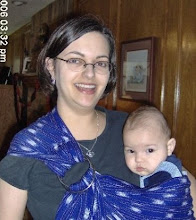The research team found the reports revealed that 11 infants suffocated when their face rested against the bumper pad, 13 died after being wedged between the bumper pad and another object and three were strangled by a bumper tie.
An examination was conducted of 22 commercially available crib bumpers for potentially dangerous features such as excessive softness, a space between the bottom of the bumper pad and mattress, the width of the pads and the length of the ties that attach the bumpers to the crib slats.
All of the bumper pads were found to be hazardous because they left a space between the bottom of the bumper pad and mattress, an area in which an infant's head could become lodged.
The researchers say the bumper pads are not providing any benefit and do more harm than good and should not be placed in cribs or bassinets.
Tuesday, September 25, 2007
Crib bumpers do more harm than good
According to a recent study published in the Journal of Pediatrics,
Link
Sunday, September 23, 2007
1 Million Cribs Recalled
It's the largest crib recall in CPSC history, and now the one place parents are told they can safely leave their children without supervision is in question.
"Crib hardware failure is actually one of the most common causes of death in cribs," Nancy Cowles, a crib safety advocate, told CBS News correspondent Sandra Hughes.
In fact, according to Cowles' organization Kids In Danger, 30 children are killed and 1,200 are injured every year in crib accidents.
And while these cribs were made in China, in this case she says China isn't to blame:
"The problem is the design flaws that the U.S. manufacturers designed into the product," Cowles said.
Recall information
Monday, September 03, 2007
Keeping Your Placenta
Jodi Selander gives advice on Bringing Your Placenta Home from the Hospital:
Women who give birth at home have the luxury of being in complete control over the care and handling of their baby’s placenta. A woman who births in a hospital has to adhere to the guidelines and policies in place at their facility of choice. In some cases, there is no written policy, and mothers are then subjected to the whim of the staff on duty at the time they deliver. If you want to take your placenta home after its birth, you must have a plan before you walk through the doors in labor. Your chance of success will increase greatly.
Subscribe to:
Posts (Atom)





